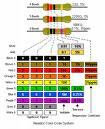Perihal saling serang ini diungkapkan Predator, seorang hacktivis dari kelompok hacker "Hiddenline" kepada detikcom, Kamis (28/11/2002). Menurutnya serangan DdoS hacker Australia ke sebuah ISP di Yogyakarta bisa jadi merupakan serangan balasan.
"Saya rasa itu mungkin balasan dari pihak Aussie atas aktivitas DdoS yang datang dari Yogyakarta.Anggota kami pertengahan bulan ini aktif menyerang 203 (prefiks nomor IP Australia - Red) secara DdoS", tulis Predator dalam emailnya.
Serangan tersebut menurut Preadator dilakukan dari Yogyakarta dan tercatat memiliki nomor IP dari daerah tersebut.
Seperti diberitakan detikcom sebelumnya, selama satu pekan terakhir, sebuah perusahaan internet service provider (ISP) di Yogyakarta berulang kali terkena serangan DdoS yang dilakukan melalui ISP Telstra Internet di Canberra, Australia.
Hacker tersebut melakukan serangan DdoS melalui port User Datagram Protocol (UDP). Akibat serangan ini, bandwith ISP tersebut menjadi penuh sesak dan para pelanggan tidak dapat melakukan akses internet sebagai mana mestinya.
Saling serang antara hacker Indonesia dan Australia dimulai dengan serangan mass defacing hacker Indonesia ke situs-situs internet Australia. Serangan cyber ini disulut aksi sweeping gaya Rambo yang dilakukan pihak kepolisian dan badan intelejen ASIO terhadap warga negara Indonesia di Australia akhir bulan lalu.
Perang cyber kali ini bukan yang pertama kali bagi kalangan hacker Indonesia. Pada 1998, sempat terjadi perang cyber melawan hacker-hacker Cina pasca kerusuhan Mei tahun itu. Pada 1999 terjadi perang cyber melawan Portugis sebelum jajak pendapat di Timor Timur.
Perang cyber melawan Portugis berubah menjadi perang cyber melawan Australia ketika negara tersebut mulai turut campur setelah terjadinya kerusuhan pasca jajak pendapat.















